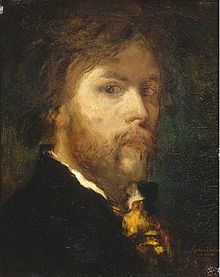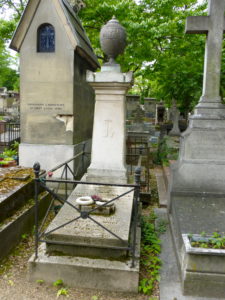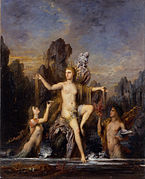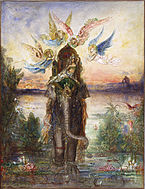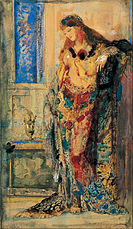 On this day in 1936 violinist and composer Ottorino Respighi died of endocarditis at the age of 56. Born in an apartment inside Palazzo Fantuzzi on Via Guido Reni in Bologna, Italy, into a musical family 0n 9 July 1879. Perhaps best known for his three orchestral tone poems Fountains of Rome (1916), Pines of Rome (1924), and Roman Festivals (1928). His musicological interest in 16th-, 17th- and 18th-century music led him to compose pieces based on the music of these periods. He also wrote several operas, the most famous being La fiamma.
On this day in 1936 violinist and composer Ottorino Respighi died of endocarditis at the age of 56. Born in an apartment inside Palazzo Fantuzzi on Via Guido Reni in Bologna, Italy, into a musical family 0n 9 July 1879. Perhaps best known for his three orchestral tone poems Fountains of Rome (1916), Pines of Rome (1924), and Roman Festivals (1928). His musicological interest in 16th-, 17th- and 18th-century music led him to compose pieces based on the music of these periods. He also wrote several operas, the most famous being La fiamma.
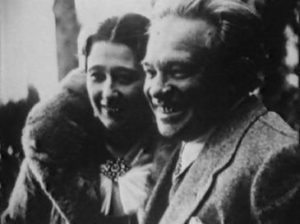 In 1919, he married the composer and singer Elsa Olivieri-Sangiacomo who, at fourteen years his junior, had been his composition pupil. In 1921, the couple relocated to a flat in Rome.
In 1919, he married the composer and singer Elsa Olivieri-Sangiacomo who, at fourteen years his junior, had been his composition pupil. In 1921, the couple relocated to a flat in Rome.
Respighi’s operas fall broadly into three groups – the dramatic-tragic operas Semirama (1910), Marie Victoire (1912–14), La Campana Sommersa (1923–27), Maria Egiziaca (1928), La Fiamma (1931–34), and Lucrezia (completed Elsa Respighi, 1936), and the lighter works, Re Enzo (1905), Belfagor (1919–22), La Bella Dormente nel Bosco (Sleeping Beauty, 1916/1933). Respighi’s operas after Marie Victoire were all set to libretti by his close collaborator, Claudio Guastalla. Although La Fiamma is Respighi’s most frequently performed opera, La Campana Sommersa and Maria Egiziaca are his operatic masterpieces, written when he was at the height of his creative powers, and both Respighi and his wife Elsa considered La Campana Sommersa to be his finest work.
The Final Footprint
#RIP #OTD in 1942 sculptor, art patron and collector, founder of the Whitney Museum of American Art, Gertrude Vanderbilt Whitney died from a heart condition in Manhattan aged 67. Woodlawn Cemetery, the Bronx. Portrait by Robert Henri
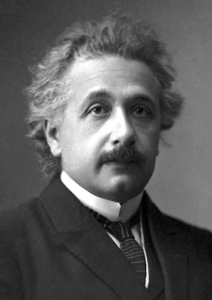 On this day in 1955, theoretical physicist, the father of modern physics, Albert Einstein died in Princeton Hospital in Princeton, New Jersey at the age of 76. Born on 14 March 1879 in Ulm, in the Kingdom of Württemberg in the German Empire. Einstein discovered the theory of general relativity, effecting a revolution in physics. He received the 1921 Nobel Prize in Physics “for his services to theoretical physics, and especially for his discovery of the law of the photoelectric effect”. Einstein was visiting the United States when Hitler came to power in 1933. He did not go back to Germany, becoming a U. S. citizen in 1940. In the summer of 1939, Einstein wrote a letter, with Leo Szilard, to President Franklin D. Roosevelt, alerting him of the possibility that Nazi Germany might be developing an atomic bomb. The letter recommended that the U.S. government should become directly involved with uranium research and chain reaction research. Einstein and Szilard, along with other refugees such as Edward Teller and Eugene Wigner, “regarded it as their responsibility to alert Americans to the possibility that German scientists might win the race to build an atomic bomb, and to warn that Hitler would be more than willing to resort to such a weapon.” Einstein married twice; Mileva Marić (1903-1919 divorce) and Elsa Löwenthal (1919-1936 her death). On his religious belief, Einstein said; “I believe in Spinoza’s God who reveals himself in the orderly harmony of what exists, not in a God who concerns himself with fates and actions of human beings.” The day before he died, Einstein experienced internal bleeding caused by the rupture of an abdominal aortic aneurysm. He refused surgery, saying: “I want to go when I want. It is tasteless to prolong life artificially. I have done my share, it is time to go. I will do it elegantly.” I have always thought physics was fascinating and had I been born a little smarter, actually a lot smarter, perhpaps I would have been a physicist. It is the study of the final frontier, or the next frontier.
On this day in 1955, theoretical physicist, the father of modern physics, Albert Einstein died in Princeton Hospital in Princeton, New Jersey at the age of 76. Born on 14 March 1879 in Ulm, in the Kingdom of Württemberg in the German Empire. Einstein discovered the theory of general relativity, effecting a revolution in physics. He received the 1921 Nobel Prize in Physics “for his services to theoretical physics, and especially for his discovery of the law of the photoelectric effect”. Einstein was visiting the United States when Hitler came to power in 1933. He did not go back to Germany, becoming a U. S. citizen in 1940. In the summer of 1939, Einstein wrote a letter, with Leo Szilard, to President Franklin D. Roosevelt, alerting him of the possibility that Nazi Germany might be developing an atomic bomb. The letter recommended that the U.S. government should become directly involved with uranium research and chain reaction research. Einstein and Szilard, along with other refugees such as Edward Teller and Eugene Wigner, “regarded it as their responsibility to alert Americans to the possibility that German scientists might win the race to build an atomic bomb, and to warn that Hitler would be more than willing to resort to such a weapon.” Einstein married twice; Mileva Marić (1903-1919 divorce) and Elsa Löwenthal (1919-1936 her death). On his religious belief, Einstein said; “I believe in Spinoza’s God who reveals himself in the orderly harmony of what exists, not in a God who concerns himself with fates and actions of human beings.” The day before he died, Einstein experienced internal bleeding caused by the rupture of an abdominal aortic aneurysm. He refused surgery, saying: “I want to go when I want. It is tasteless to prolong life artificially. I have done my share, it is time to go. I will do it elegantly.” I have always thought physics was fascinating and had I been born a little smarter, actually a lot smarter, perhpaps I would have been a physicist. It is the study of the final frontier, or the next frontier.
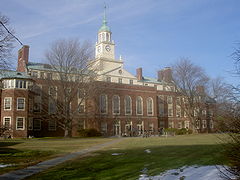 The Final Footprint – Einstein was cremated and his cremains were possibly scattered around the grounds of The Institute for Advanced Study in Princeton. Einstein has been the subject of, or inspiration for, many novels, films, plays, and works of music.
The Final Footprint – Einstein was cremated and his cremains were possibly scattered around the grounds of The Institute for Advanced Study in Princeton. Einstein has been the subject of, or inspiration for, many novels, films, plays, and works of music.
| Dick Clark | |
|---|---|
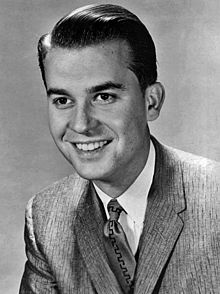 in 1961 |
|
And on this day in 2012, radio and television personality, television producer and film actor, as well as a cultural icon Dick Clark died from a heart attack at the age of 82 in Santa Monica, California. Born Richard Wagstaff Clark on November 30, 1929 Perhaps best known for hosting American Bandstand from 1957 to 1987. He also hosted the game show Pyramid and Dick Clark’s New Year’s Rockin’ Eve, which transmitted Times Square’s New Year’s Eve celebrations. Clark was well known for his trademark sign-off, “For now, Dick Clark — so long!”, accompanied by a facsimile of a military salute.
As host of American Bandstand, Clark introduced rock & roll to many Americans. The show gave many new music artists their first exposure to national audiences, including Iggy Pop, Ike and Tina Turner, Smokey Robinson and the Miracles, Stevie Wonder, Prince, Talking Heads, Simon & Garfunkel and Madonna. Episodes he hosted were among the first in which blacks and whites performed on the same stage, and likewise among the first in which the live studio audience sat without racial segregation. Due to his perennial youthful appearance and his largely teenaged audience of American Bandstand, Clark was often referred to as “America’s oldest teenager” or “the world’s oldest teenager”.
Clark was married three times. His first marriage was to Barbara Mallery in 1952; the couple divorced in 1961. He married Loretta Martin in 1962 and divorced in 1971. His third marriage, to Kari Wigton, whom he married in 1977, lasted until his death.
The Final Footprint
Clark’s family did not immediately decide on whether there would be a public memorial service, but stated “there will be no funeral”. He was cremated on April 20, and his ashes were scattered in the Pacific Ocean.
Have you planned yours yet?
Follow TFF on twitter @RIPTFF

